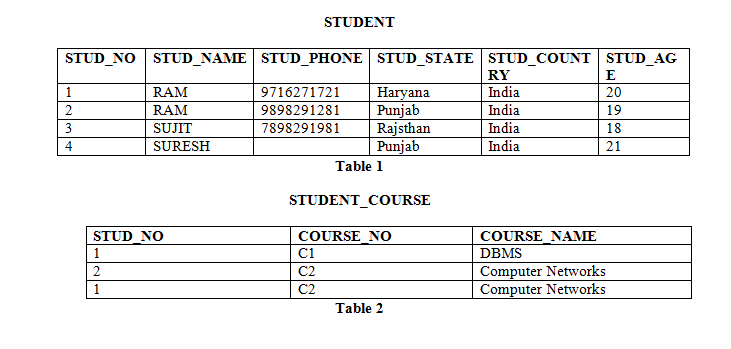首要的关键:
主键用于确保特定列中的数据是唯一的。它是一列不能有 NULL 值。它要么是现有的表列,要么是数据库根据定义的顺序专门生成的列。
例子:参考图——
STUD_NO 和 STUD_PHONE 都是关系 STUDENT 的候选键,但可以选择 STUD_NO 作为主键(只有一个候选键)。
外键:
外键是关系数据库表中的一列或一组列,它提供两个表中数据之间的链接。它是一列(或多列)引用另一个表的一列(通常是主键)。
例子:参考图——
STUDENT_COURSE 中的 STUD_NO 是 STUDENT 关系中 STUD_NO 的外键。
数字:

让我们看看主键和外键的区别:
| S.NO. | PRIMARY KEY | FOREIGN KEY |
|---|---|---|
| 1 | A primary key is used to ensure data in the specific column is unique. | A foreign key is a column or group of columns in a relational database table that provides a link between data in two tables. |
| 2 | It uniquely identifies a record in the relational database table. | It refers to the field in a table which is the primary key of another table. |
| 3 | Only one primary key is allowed in a table. | Whereas more than one foreign key are allowed in a table. |
| 4 | It is a combination of UNIQUE and Not Null constraints. | It can contain duplicate values and a table in a relational database. |
| 5 | It does not allow NULL values. | It can also contain NULL values. |
| 6 | Its value cannot be deleted from the parent table. | Its value can be deleted from the child table. |
| 7 | It constraint can be implicitly defined on the temporary tables. | It constraint cannot be defined on the local or global temporary tables. |